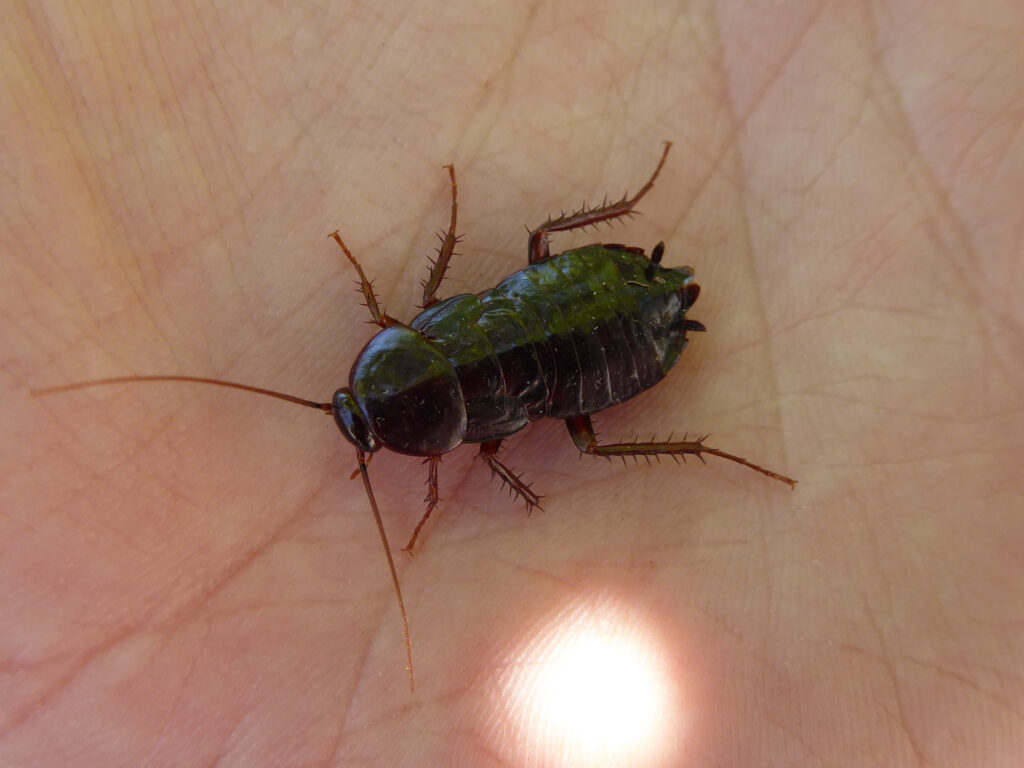
Identification and Appearance
The Oriental cockroach (Blatta orientalis), also known as the “black beetle” or “water bug,” is a dark brown to black cockroach species, typically around 1 inch in length. Unlike some other species, the Oriental cockroach cannot fly. Males have wings that cover most of their bodies, while females have only small wing pads, making them flightless.
Habitat and Behavior
Oriental cockroaches are highly attracted to moisture and are most commonly found in damp environments. This makes them frequent invaders of basements, crawl spaces, and areas with water leaks or standing moisture. They thrive in places such as under sinks, in drains, and even around outdoor ground covers like ivy or mulch. Unlike other species, Oriental cockroaches are less likely to be found in higher areas like gutters or eaves.
These cockroaches are nocturnal scavengers, coming out at night to feed on decaying organic matter, starchy foods, and waste. They are particularly problematic around homes, restaurants, and food-processing facilities due to their ability to contaminate food sources and spread disease.
Reproduction and Life Cycle of the Oriental Cockroach
The female Oriental cockroach produces large egg capsules (ootheca), each containing 10-20 eggs. Over her lifetime, a female may produce up to 15 egg capsules. These cockroaches have a slower life cycle compared to other species, with eggs taking up to eight weeks to hatch and the entire process from nymph to adult lasting several months. Adult cockroaches live for about 4-5 months, but their ability to reproduce quickly can result in substantial infestations if left unchecked.
Oriental Cockroach Health Risks and Control Methods
Oriental cockroaches pose significant health risks as they can carry harmful bacteria such as E. coli and Salmonella, which can lead to food poisoning. Their preference for damp, unsanitary areas increases their likelihood of spreading pathogens to surfaces and food.
Integrated Pest Management (IPM) is the most effective strategy for managing Oriental cockroaches. This approach includes:
- Sanitation: Regularly clean areas prone to moisture buildup, such as basements and around outdoor water sources. Remove debris and maintain a dry environment to reduce their habitat.
- Exclusion: Seal cracks, crevices, and any other potential entry points to prevent cockroaches from entering buildings.
- Physical Controls: Consider using sticky traps to monitor for cockroach presence and identify hotspots in both indoor and outdoor areas.
- Chemical Treatments: Insecticides may be used in severe infestations, but these should be applied around damp areas such as basements or garages, where Oriental cockroaches are most likely to thrive.
By addressing both environmental and structural conditions, it is possible to effectively reduce and manage Oriental cockroach populations in homes and businesses.
For further reading about Oriental cockroaches and Integrated Pest Management (IPM), you can visit the University of California’s detailed guide on the subject. Here is the link:
University of California IPM: Oriental Cockroaches
Get Expert Help for Oriental Cockroach Control
Protect your home from cockroach infestations today. Contact us for professional pest control solutions and a free consultation!
